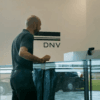
With the clocks going back a few weeks ago the nights are well and truly drawing in. For fleet and grey fleet drivers this will often mean that driving for work will now be done in the dark, and with more incidents involving vulnerable road users during the shorter daylight months (October-March) it’s important to be mindful of keeping pedestrians safe:
- Keep an eye on your speed. Near schools 20 really is plenty, and out on the road driving at 35 means you are twice as likely to kill a pedestrian should the worst happen.
- Children can be harder to see and may run out between parked vehicles, remember to ‘LOOK OUT’ – Over, Under, and Through vehicles – you might spot someone before they step out.
- Predict what pedestrians are going to do, some give tell-tale signs:
- Looking over their shoulder? They might be about to cross
- Gap between you and the car in front? They might think of running across rather than waiting for you to pass
- On their phone? They might not be aware of traffic and could step out unpredictably
- When passing stationary vehicles keep at least a door’s width whenever possible. This helps avoid any car doors that might open and someone or something coming out into your path from between the vehicles.
- When it’s raining and cold pedestrians are more likely to rush about. Road safety often falls lower on their list of priorities than trying to keep dry so stay vigilant.
- With clocks only recently going back, it can take cyclists time to get into the routine of using/attaching their lights so be mindful of any that may be caught without.
IAM RoadSmart’s head of driving and riding standards, Richard Gladman said: “In a perfect world pedestrians would all be on the pavement and would never have to cross a road, in a near perfect one a pedestrian on a road would be wearing flashing high viz and your car would be shouting about their presence – in our real world it is up to us to share the road space, be aware and help where we can. An effort to be courteous will go a long way to making someone’s day and will help keep us all safe”
Our driver risk assessments can help you to identify drivers who would benefit from a boost to their driving skills such as hazard perception. We can give them the 1-1 training needed to stay safe when driving for work in all conditions. Take a look at our Fixed-fee packages and our Driving for Work course for more information.


